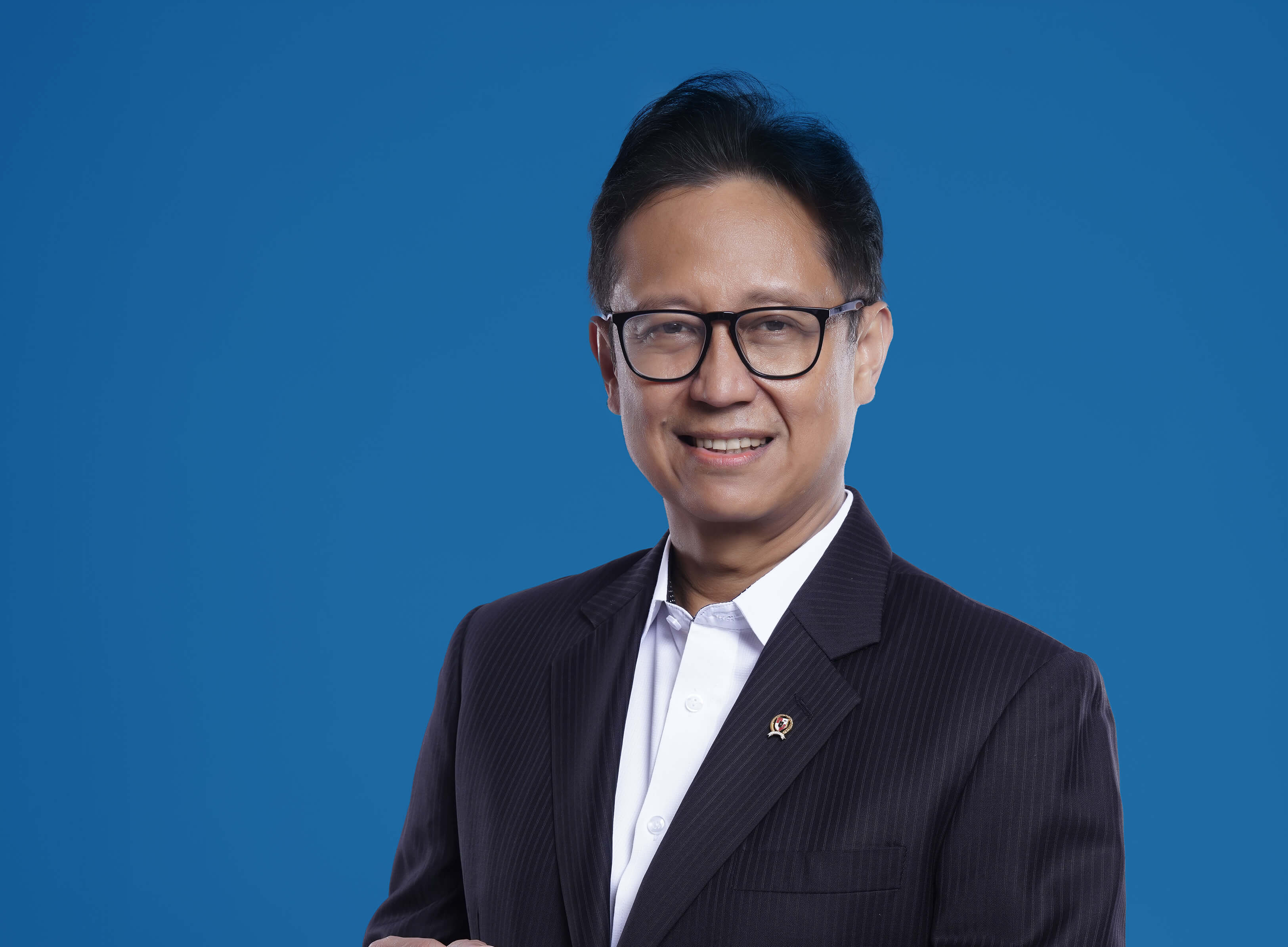


As the Chair of ASEAN in 2024 and the ASEAN Health Ministers Meeting (AHMM), Lao PDR has set a significant agenda under the theme "Health: Transforming ASEAN Health Development Resilience in a New Context." In this interview, Minister Bounfeng Phoummalaysith outlines the key priorities to enhance health resilience across the region. With ASEAN continuing its recovery from the pandemic and preparing for future crises, Minister Phoummalaysith delves into critical initiatives, including biosafety and biosecurity measures, the health security interface, the ASEAN Public Health Emergency Coordination System (APHECS), and the ASEAN Centre for Public Health Emergencies and Emerging Diseases (ACPHEED). He also discusses efforts to prevent HIV and AIDS and promote smoke-free advocacy, healthy lifestyles, and people’s well-being in ASEAN.
Since the beginning of 2024, the Lao PDR has executed many important activities according to its set priorities and milestones. Among the health sector’s priorities are elevating biosafety and biosecurity measures and improving regional and country preparedness and response capabilities against biological threats and pandemics. A series of meetings have been held with participants from ASEAN Member States to discuss the challenges, gaps, and opportunities in biosafety and biosecurity measures. The goal is to adopt the ASEAN Leaders’ Declaration on Biosafety and Biosecurity to enhance health security and resilience to fit the current context and needs of ASEAN Member States at the 44th and 45th ASEAN Summits. As of now, an advanced draft of the declaration and its operationalisation through the Biosafety and Biosecurity Network have been developed and reviewed.
To further strengthen the cooperation among ASEAN Member States, the Lao PDR reaffirms the importance of the establishment agreement and the operationalisation of the ACPHEED. Equally important is the adoption of the Framework of APHECS, which enhances the regions coordinating system on public health emergencies and emphasise preparedness and response measures, under the directive of ASEAN Health Sectoral Body.
The ASEAN Leaders’ Declaration on Ending Inequalities and Getting on Track to End AIDS by 2030 is also an important declaration. It renewed the call for ASEAN Member States and partners to join forces and collectively end AIDS in ASEAN by 2030 through priority themes of (i) getting on track, (ii) strengthening, supporting and sustaining community-led responses, (iii) ending inequalities, and (iv) financing and sustaining the AIDS response. The declaration was operationalised through an updated ASEAN Health Sector Work Plan on HIV and AIDS 2021-2025, which summarises the 23 project activities that contribute to realising the four priority themes. One of the important events to be held this year is a consultation meeting on “Sharing on Use of Innovative Strategies to Scale-up Programme for Key Populations.” The consultation meeting will be organised by the Lao PDR as lead country, Chair of AHMM and SOMHD (2022-2024), and 2024 ASEAN Chair, in collaboration with UNAIDS, through the Regional Support Team for Asia Pacific, a long-standing partner of the ASEAN Health Sector in HIV and AIDS.
In pursuit of the goal of cultivating smoke-free environments across ASEAN, the ASEAN Health Sector, led by the ASEAN Focal Points on Tobacco Control (2010-2015) and subsequently the ASEAN Health Cluster 1 on Promoting Healthy Lifestyle and ASEAN Contact Points on Tobacco Control (2016 onwards), has undertaken a series of impactful activities. Building upon initiatives like the extensive campaign titled “Towards a Smoke-free ASEAN,” the Fourth Meeting of ASEAN Health Cluster 1 endorsed the establishment of the ASEAN Smoke-free Award (ASA) at the regional level, with the Lao PDR leading the effort in collaboration with the Southeast Asia Tobacco Control Alliance (SEATCA), and the ASEAN Secretariat’s Health Division. It is proposed that the awards be conferred to cities, municipalities, provinces, states, and similar entities that demonstrate outstanding commitment to creating smoke-free environments.
The ASEAN Smoke-free Award represents a significant contribution by the ASEAN Health Sector towards realising the ASEAN Declaration on Culture of Prevention for a Peaceful, Inclusive, Resilient, Healthy, and Harmonious Society, a pivotal political pact adopted during the 31st ASEAN Summit in November 2017. Aligned with this declaration, the ASEAN Smoke-free Award aims to advance and uphold the campaign’s objectives, “Towards a Smoke-free ASEAN,” advocating for reduced tobacco consumption and fostering a supportive environment for healthy living among all ASEAN citizens. By recognising the exemplary efforts of smoke-free cities throughout the ASEAN region, the ASEAN Smoke-free Award underscores the importance of raising awareness about the adverse effects of tobacco use on public health and the environment, as well as the critical role of implementing and enforcing smoke-free regulations.
The Lao PDR, as 2024 chairman of ASEAN, seeks to boost its tourism and economy while promoting healthy habits and spaces. It launched the campaign, Visit Lao Year 2024,which educates tourists about the country’s history, art, culture, traditions, and natural attractions through green and eco-tourism. The Lao PDR also advocates Smoke-free Tourism based on the recommendations of its Ministry of Health and in accordance with the Tobacco Control Law as amended in 2021. This policy aims to protect people, including tourists, from second- and third-hand smoke, and support and promote healthy lifestyles in the country and around the region.
Four years have passed since the COVID-19 pandemic was first declared, and the ASEAN region is still recovering from its disastrous impacts. Can you share insights and lessons learned on the Lao PDR’s response to the pandemic?
Since the beginning of the pandemic, the Lao government has never underestimated the severity of the crisis. The Lao PDR’s Prime Minister established a National Taskforce Committee for COVID-19 Prevention and Control, led by the Minister of Health and supported by Vice-Ministers and representatives from relevant ministries. This committee acts as a coordinating body throughout the implementation of the National Preparedness and Response Plan. At the provincial and district levels, COVID-19 task forces have been created, involving a range of sectors from public and private, as well as local communities. This reflects a coordinated approach, aimed at increasing capacity, sharing of resources and information, and ensuring strong engagement with local communities to prevent and respond to COVID-19. Other measures have been made, such as lockdowns, quarantines, tests, and strengthening healthcare capacities. All efforts were primarily aimed at buying time to establish and strengthen the country’s vaccination campaign. Responding early and activating the National Preparedness and Response Plan enabled the allocation of funding for the response to the COVID-19 pandemic from both external and internal sources.
The Lao PDR has been praised for its swift and effective response to the COVID-19 pandemic. One of the key lessons learned from the response is the importance of early and decisive action. The Lao PDR implemented strict border controls, quarantine measures, and widespread testing early in the outbreak, which helped to contain the spread of the virus and limit its impact on the population. This proactive approach demonstrated the importance of being prepared and taking quick action in response to a public health crisis.
Another important lesson learned from the Lao PDR’s response to the pandemic is the importance of communication and transparency. The government regularly updated the public on the status of the outbreak, the measures being taken to control it, and how individuals could protect themselves and their communities. By providing clear and consistent information, the government built trust with the public and encouraged widespread compliance with public health guidelines. This emphasis on communication highlights the importance of transparency and honesty in times of crisis.
Overall, the response of the Lao PDR to the COVID-19 pandemic can serve as a valuable example for other countries facing similar challenges. By acting early, implementing strict measures, and prioritising communication and transparency, the Lao PDR was able to effectively contain the virus’s spread and protect the health and well-being of its population. The Lao PDR received the vaccine on time compared to other countries.
These lessons learned can help guide future responses to public health crises and serve as a reminder of the importance of preparedness, proactive action, and clear communication in times of uncertainty.
ASEAN’s Health sector quickly activated existing regional mechanisms and strengthened regional and international cooperation to address and respond to the pandemic. How better prepared are we to detect, prevent and prepare for the next public health emergency of this magnitude?
To be better prepared to detect and prevent the next public health emergency, it is important to establish strong surveillance systems that will monitor any potential threats to public health. The system should include regular monitoring of health data, laboratory testing for infectious diseases, and monitoring of environmental factors that could impact public health. By carefully monitoring these factors, public health officials can detect any potential threats early on and take action to prevent them from becoming a larger crisis.
It is also crucial to have a well-trained and equipped public health workforce that can respond quickly and effectively to emergencies. This includes having a team of trained professionals who can coordinate response efforts, conduct contact tracing, and provide medical care to those affected by the emergency. Additionally, having access to necessary medical supplies and resources, such as vaccines and medications, is crucial to respond to a public health emergency effectively.
Finally, establishing strong communication channels with other agencies apart from government sectors, healthcare providers, and the public is essential for successful emergency preparedness and response. By keeping the public informed about potential threats to their health and providing them with accurate and timely information, public health officials can help prevent panic and confusion during a crisis. Ultimately, investing in preparedness now can help prevent larger public health emergencies in the future.
The pandemic shifted the focus away from other healthcare concerns, such as the continuous rise of non-communicable diseases, preventive care and vaccinations, maternal and childcare, and mental health issues. How is the ASEAN health sector addressing these issues now as the region recovers from the pandemic?
The Lao PDR’s response to the pandemic demonstrated the importance of early and decisive action, strict border controls, quarantine measures, and widespread testing. The government’s emphasis on communication and transparency helped build trust and encourage compliance with public health guidelines. Receiving the vaccines on time and conducting widespread vaccinations also contributed to the country’s effective response.
To better prepare for future public health emergencies, it is essential to establish and enhance strong surveillance systems, monitor health data and environmental factors, and have a well-trained and equipped public health workforce. Access to necessary medical supplies and resources, along with effective communication channels with various stakeholders, is also crucial for successful emergency preparedness and response. Investing in preparedness is key to preventing larger crises in the future.








